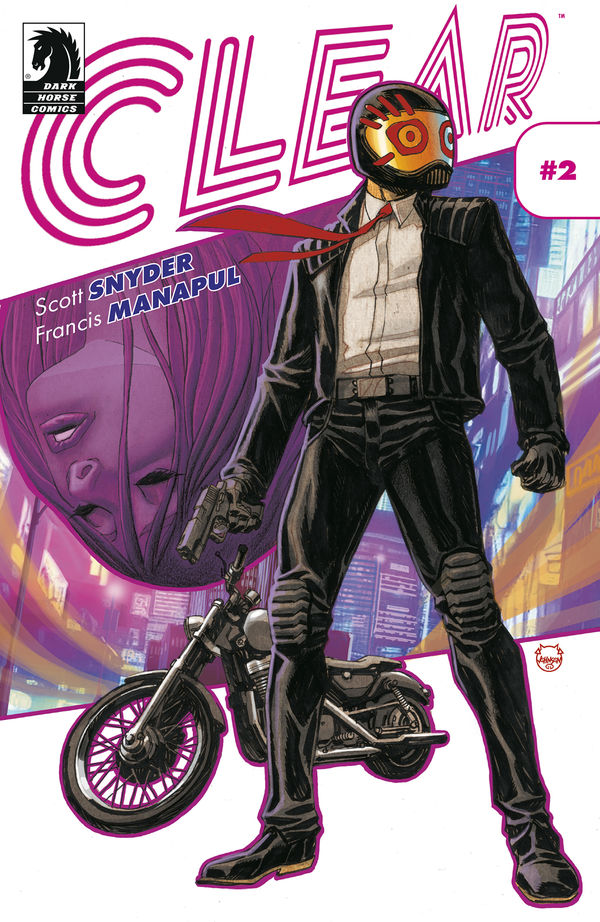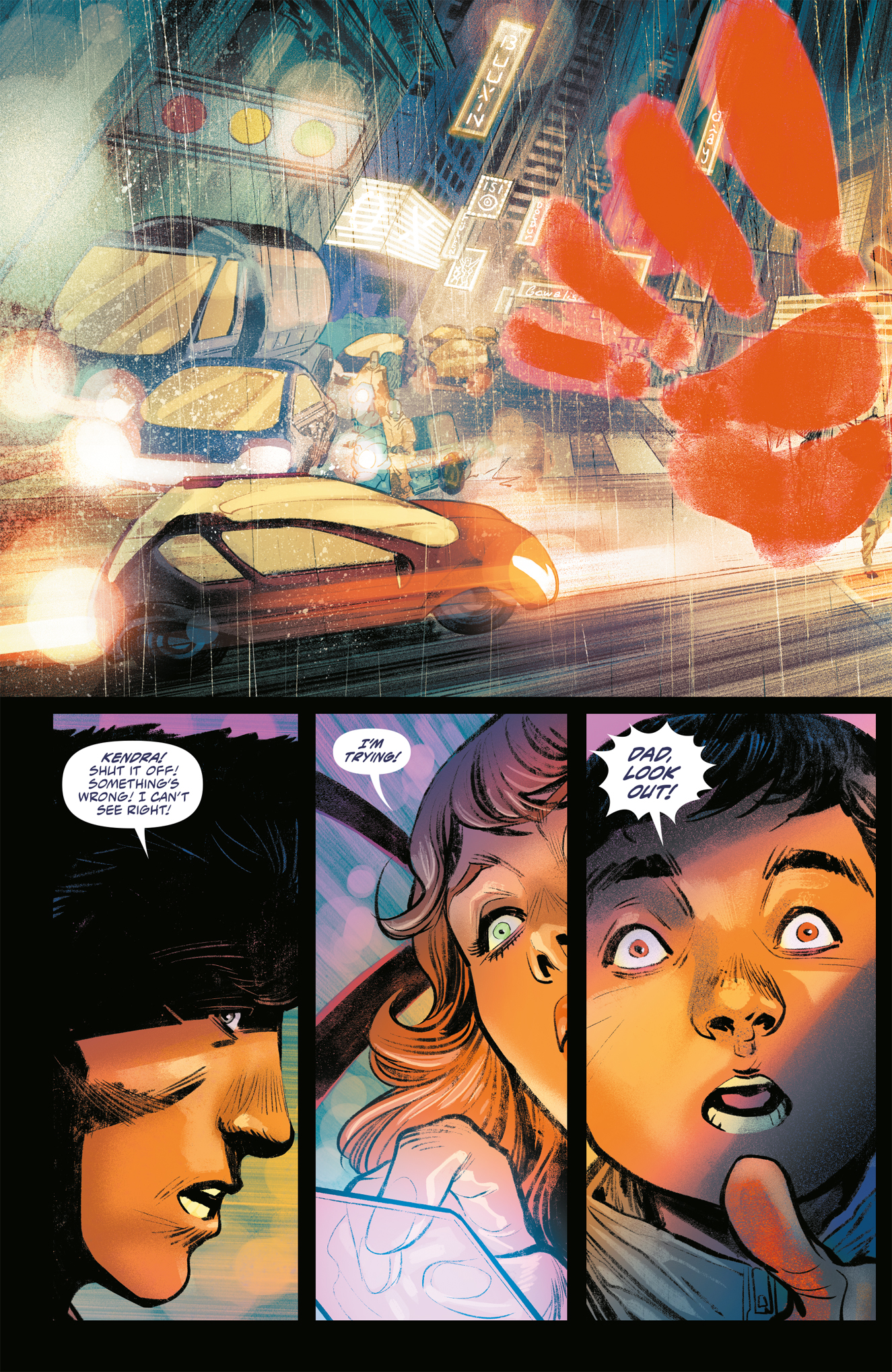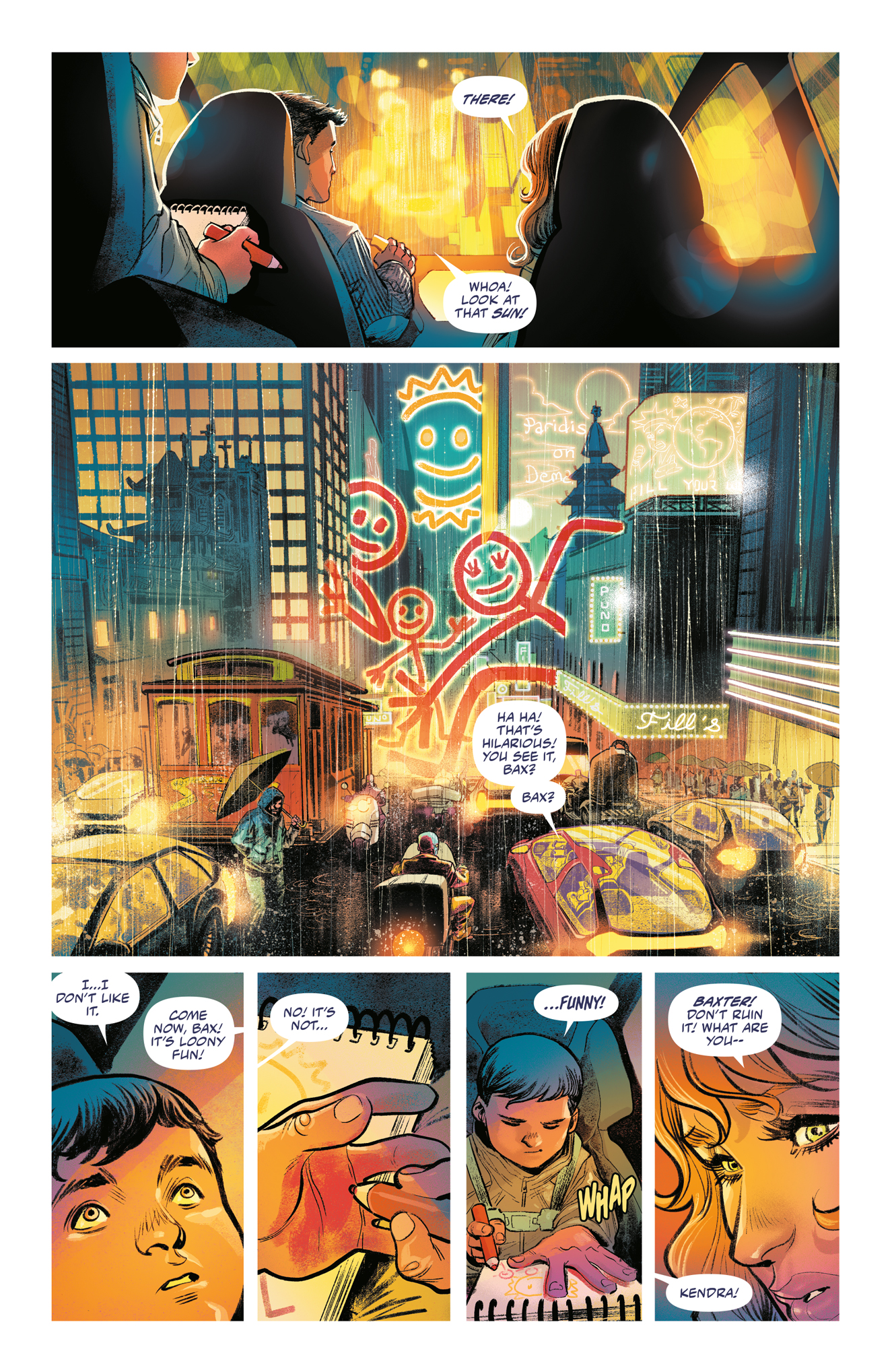Both artist Francis Manapul and writer Scott Snyder are two titans of the comic book industry, crafting tales of larger-than-life heroes in such books as their run together in DC Comics’ Justice League. However, the duo are also known for comic stories that venture outside the world of tights and capes, as seen with their hard-boiled, science fiction noir Clear. The team released the series first through comiXology, signing a deal that would see the comic in print exclusively through Dark Horse Comics.
In Clear, Manapul and Snyder immerse readers in a future where the populace use technology to alter their visual surroundings to their liking, letting them influence what they see and how they experience the world. But this detachment from reality have a price? And how does it impact detective Sam Dunes and the death of his ex-wife? Clear is firmly in the tradition of some of the best science fiction noir tales, standing shoulder-to-shoulder with stories like Blade Runner while being wholly its own animal.
I spoke with Mr. Manapul recently about the conceit of Clear, how he and Mr. Snyder came up with the idea for the series, the comic making the leap from digital to print, and how he lets the story help dictate the art.

CLEAR # 1 cover
FreakSugar: For folks who might not be familiar with the series, what is the idea behind Clear?
Francis Manapul: In the future, everybody will have the technology to use “veils,” changing their visual surroundings to their personal desires and aesthetics. You want to live in a world inhabited by dragons instead of cars? You got it. You want to live as if the 50’s never ended? Done. Everybody lives in their own visual bubble, affectively shielding the individual from reality. Amidst everyone’s detached life is our detective, Sam Dunes, who always sets his vision to clear. The driving force of the story is his investigation into the strange circumstances surrounding his ex-wife’s death, who happens to have been there at the birth of this new technology.
FS: What can you tell us about the genesis of the book? How did you and Scott come up with the concept?
FM: A few years ago, when we were nearing the end of our work on Justice League, both of our contracts were about to expire. We had this mutual desire to create new worlds and explore a completely new genre with our work. Scott had this idea about a technology that would allow people to apply filters to their environment, allowing them to live in a personal fantasy world. Where it all came together was during a trip to New York with my family to visit Scott and his, where we began to discuss what the future may look like for our kids. As parents, we always worry about the world we’re leaving behind and how they would traverse a society whose perception of reality is tied to people’s personal beliefs. This story was born out of those fears, and knock on wood, will remain a work of fiction.

CLEAR #2 cover
FS: The art is gorgeous, but also different than some of what we’ve seen from you before. How do you approach the look and design of the book?
FM: Thanks! I try to approach each book differently, with the explicit goal of accentuating the feeling and atmosphere of the story. When I was working on The Flash, I used very fluid lines, opting for natural brushes and ink wash. The panels also reflected the motion of the character. With Batman, I went for a more ridged layout reflecting the structured order Batman is trying to instill in a chaotic Gotham. Now with Clear, my main goal was to create a gritty but dreamy atmosphere. A colorful world embodying the spectrum of all the veils people would use but balancing it with a very somber and dark cinematic aesthetic.
FS: Clear has made the leap from comiXology to print. What has the reception been like with a potentially new audience experiencing the book for the first time?
FM: Delving into the digital space was exciting! For the first time I felt like the international audience could read and experience the story at the same time as our North American readers. The format also allowed for some interesting storytelling techniques which we tried to utilize to differentiate the digital reading experience front print. However, up to that point most of my career has been built on the comic stands. So, for me going to print really felt like coming home. I’m also beyond thrilled that Dark Horse will bring Clear to the stands. They’ve long been a champion of creators and their unique visions, so we’re just thrilled to be a part of that rich history.

From CLEAR #2
FS: You and Scott have worked together before. How has the collaboration been like, working together again? What has the process been like?
FM: Scott is a phenomenal writer who I’ve admired from afar since his days on American Vampire. It was a real treat to work with him at DC, but as with most things in the corporate world; I was jumping on a fast-moving train. With creator owned books, we were able to start from scratch. The more issues we get behind us, the easier and more collaborative the process becomes. Even to this day as we develop new ideas, our chemistry continues to evolve in ways I didn’t see coming. Having written a lot of my work over the last decade you get used to seeing things from a single perspective and it shocks and surpasses my expectations when we’re able to jam on something and have it align so seamlessly and complimentary to each of our ideas. Working with Scott sets a high bar for what a collaboration should be; a joint venture that pushes each creator beyond their creative limits.
FS: After this initial run of Clear, do you have more tales on the horizon?
FM: We definitely have more stories to tell. There are so many avenues in this world we have yet to explore and we’d certainly enjoy coming back and taking those detours later down the road.
FS: Are there any other projects you’re working on that you’d like to promote?
FM: Nothing I can talk about yet. 2023 is really focused on Clear’s release, but expect big things in 2024. It’s killing me not to be able to share what we’ve been up to, but I promise it will once again be vastly different from what’s come before.

From CLEAR #2
FS: There are so many elements from different genres present. Does this book allow you to flex artistic muscles you haven’t before in other series?
FM: Absolutely. Not to sound so esoteric, but I allow the story to dictate my approach to the art. I know it sounds counter intuitive, but I never want to call too much attention to the art, rather focus on a visual experience that pulls the readers deeper into our world. As artists, we all love to stand out, but in my opinion when your art calls out too much it creates a detachment from the reading experience. Ultimately, my goal is to tell the best story I can, and Clear has created a playground where I’m able to explore many different styles and not have the experience be jarring, instead the visual exploration adds texture to the story.
FS: If you had one final pitch for Clear, what would it be?
FM: This is a really high concept story with a distinctly ground level emotional impact. I genuinely feel this has been the best work of our careers, and we’d love for you to join us on this murder mystery tour through the altered lens of the citizens of San Francisco.
Clear #2 is on sale now from Dark Horse Comics.
From the official description of issue #2:
Secrets are unveiled as Dunes continues to unravel the mystery behind his wife’s death and the legacy she left. The clock is ticking as our neoshamuss own perception of reality begins to fracture.
Writer Scott Snyder and artist Francis Manapul step out from the world of caped heroes to present a sci-fi noir tale for the ages! In this wild and twisting mystery where nothing is as it seems, discover a future where no one sees life the same way.
